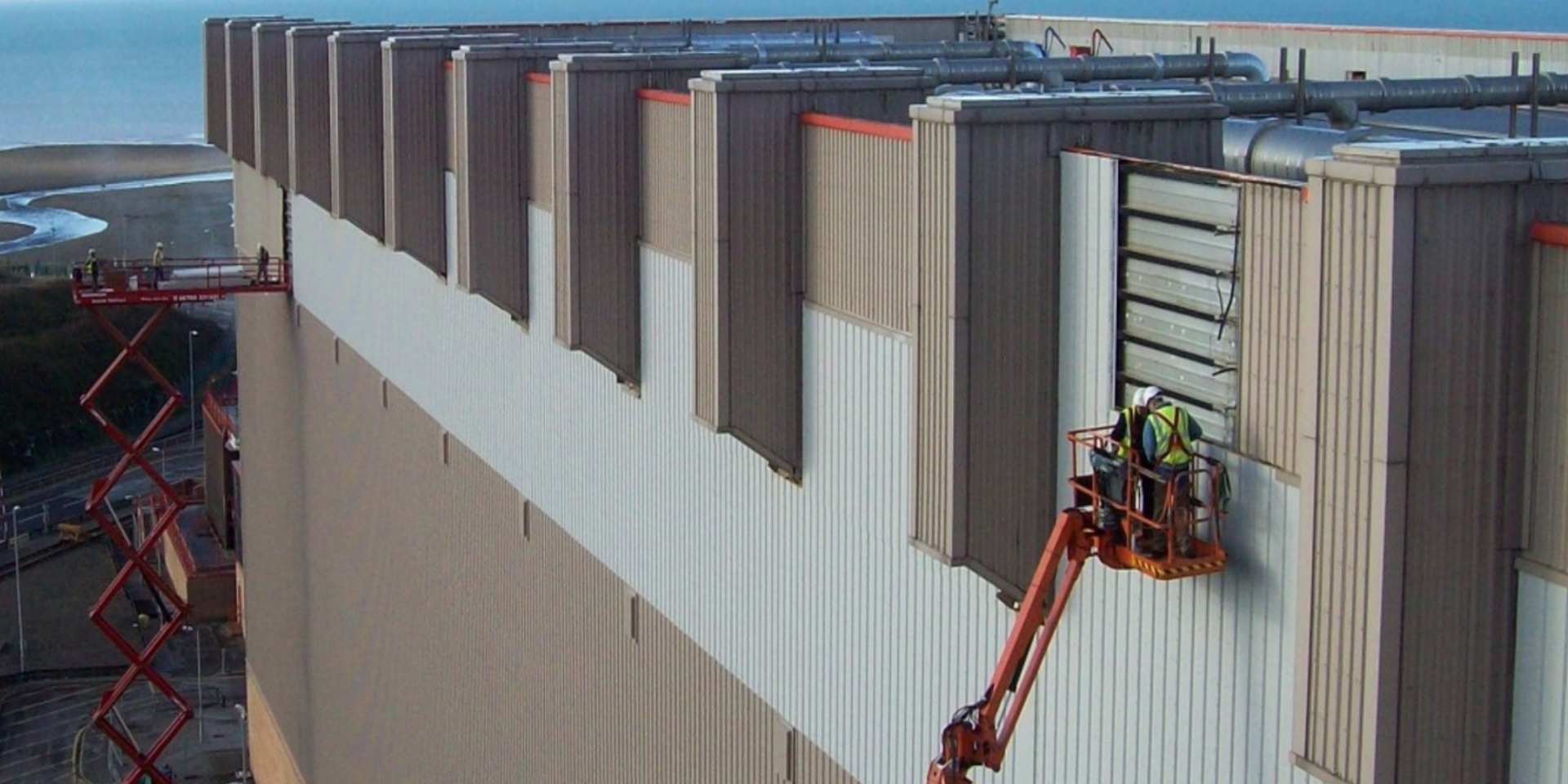The THORP facility located on the Sellafield Nuclear Site in Cumbria opened in 1994. Since opening it has processed 9331 tonnes of used nuclear fuel from 30 customers in nine countries around the world. However, reprocessing operations came to end in November 2018 due to clients deciding to store waste rather than reprocess it. The facility will now be used to store used nuclear fuel until the 2070s.
In 2012 Shepley acted as the main contractor on the THORP re-cladding project. The project is one of the biggest we have completed; the building itself is 36 meters tall and 192 meters long. The client (Sellafield Ltd) carried out a performance analysis of the building and were concerned of the potential long-term integrity of the building, signs were emerging and suggested that it would eventually require a replacement and a permanent solution.
Therefore, Shepley worked together with the supply chain to establish a longterm solution. We were responsible for the removal of the existing 13,000m2 of single skin aluminium sheeting and replacing it with Corus composite Trisomet 333 System panels.
The Trisomet 333 System panel was best suited for the job due to its good lifetime performance, this material reduced the need to further re-clad in the future and met the performance criteria set by the client and provides faster installation.
Mitch Dunne, Roofing and Cladding Project Manager explained that the new Trisomet 333 System walls featured the Tata Steel Repertoire bespoke colour matching service to match the original cladding.
Over 13,000m2 of panels were supplied in four-meter lengths to comply with site health and safety handing requirements. The thermal performance of Trisomet 333 System helped to improve the mean temperature of the building. Installation of the panels also cut down the risk of air leakage though voids.
The existing stainless-steel structural tray linings remained in place, but we did carry out work to reseal the liner joints to improve airtightness. We also installed a new stainless-steel carrier rail to the existing structural liner laps and fi xed the new Trisomet 333 System panels, using Ash & Lacy Building Systems’ stainless-steel fixings throughout, having carried out appropriate pull out and shear testing. Flashings were made by Architectural Steel Ltd.
We delivered the project using an innovative approach to recladding such a large building, and one which had not been used before at Sellafield. We reclad the building using a large scissor lift, rather than putting up a huge amount of scaffolding. This approach was much more efficient, saving a lot of time and money, and ended up with us giving the client some money back!
The contract required a phased approach to maintain weather integrity and a positive attitude in order to work collaboratively with the design team, the supply chain and the client to successfully deliver the project.





